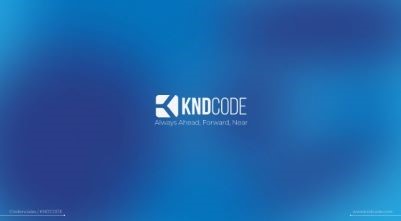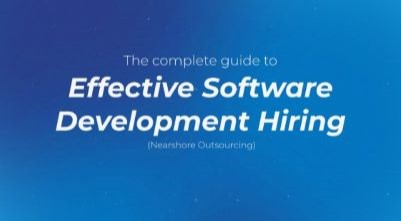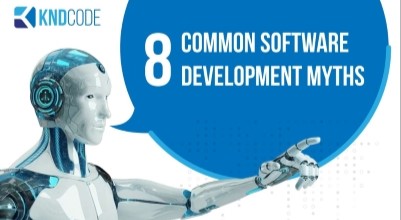Software Maintainability: What Is It and Why Is It Important?
Building software that functions beautifully the first time it goes live is every developer’s primary goal, but the project doesn’t end on launch day. Software is continually in flux—it evolves as the needs of the business and its customers change over time. On top of that, no software is infallible, and even the best will start to show its age eventually. Updating software in these scenarios can either be a relatively simple, routine task or a nightmare. The key to ensuring it’s the former is software maintainability.
What Is Software Maintainability?
Simply put, software maintainability measures the amount of time, effort, and money that will be required in order to change or repair your software’s code after it’s been deployed. Even though maintainability doesn’t come into play until the software has already been launched, it should be a consideration during every step of the development cycle in order to prepare for inevitable maintenance needs. Typical software maintenance tasks might include:
Improving functionality
Enhancing the software by building on existing features or adding new ones. These improvements could be made in response to customer feedback, to address the changing needs of the business, or for a variety of other situational reasons.
Eliminating features
Removing or entirely replacing functionalities that are no longer needed. Just like adding features, removing features could be done in response to customer feedback or to adapt the software to evolving business needs.
Fixing bugs
Identifying and correcting faults in the software that are preventing it from functioning as intended.
Upgrading security
Identifying and fixing vulnerabilities in the software’s code. A business’s security needs often change rapidly, so it’s just as important to plan for ongoing security maintenance as it is to plan for performance or UX improvements.
Maintainability makes it easier to perform maintenance tasks like these, which allows the software to not only remain functional for longer but also evolve to keep pace with rapidly changing industries. On the other hand, software that has not been built with maintainability in mind will fight your efforts to change it every step of the way.

Different Types of Software Maintainability
There are four main kinds of software maintainability:
Preventative
Preventive maintainability is the process of actively searching for weaknesses in the software to anticipate future issues. Then, changes can be implemented proactively to avoid the issues from arising altogether.
Adaptive
It’s very likely that your whole software ecosystem will evolve over time as individual components are added, removed, or changed. Adaptive maintainability ensures that software remains compatible with the larger infrastructure that it exists within and ensures continual interoperability.
Corrective
Corrective maintainability is the process of identifying problems with the software and fixing them. Ideally, preventative maintainability would prevent this form of maintenance from ever being necessary, but unfortunately, we can’t always predict every risk or weakness. In those cases, the software will need to be repaired quickly.
Perfective
Perfective maintainability goes beyond simply maintaining the software and entails active attempts to improve it. This evolution could be additive or subtractive—sometimes new capabilities need to be implemented and sometimes obsolete or ineffective features need to be removed. Perfective maintainability could also involve minor changes to existing functionalities to improve user experience (UX).
Why Is Software Maintainability Important?
Maintainability is a crucial consideration during the development process because it impacts the software’s longevity and the amount of time and money that is required to maintain it. Let’s break down exactly how these factors are affected by maintainability.
Improves Longevity
Maintainable software is easier to repair and requires less frequent maintenance, which translates directly into a longer lifespan. When your IT team is able to implement bug fixes and improvements on-the-fly, your software will perform better and provide a better UX.
Building maintainable software can also give your organization an advantage over competitors with less maintainable software that bottlenecks efforts to adapt to changing needs and expectations. Maintainability makes it possible to add or change features confidently, not avoid making improvements for fear of breaking the existing code.
Many organizations depend on their software systems to function correctly every day, or the whole operation could come to a halt. Software maintainability is your best defense against this risk. If your software is maintainable, your IT team will be able to prevent software failures or recover from them quickly, and the ordeal can be downgraded from a disaster to an inconvenience.
Reduces Maintenance Costs
Most IT teams understand and account for the fact that software development is a resource-intensive task. However, what some teams fail to consider is how much money will be required for ongoing post-launch maintenance. You need to be able to continue to support the software months or years into the future unless you plan to replace the software as soon as it breaks, which is an even more expensive option.
The reality is that software maintenance is much more expensive than software development. Factoring maintenance costs into the original budget will ensure that future work does not put an unexpected financial strain on the business, and prioritizing maintainability during development will ensure that future maintenance costs remain as low as possible.
Saves Time
Highly maintainable software is easy for IT teams to keep in top shape with minimal time and effort required. Software with poor maintainability will become increasingly burdensome as it ages and will eventually require even more time and effort to maintain than it took to develop in the first place.
All that time spent struggling to work around unfriendly code that was written years ago is time that can’t be spent actually improving the software. Prioritizing maintainability from day one will enable your IT team to use their time to guide the software’s evolution rather than simply maintain its current state.
>How Can You Prioritize Maintainability?
Considering maintainability from the beginning of the development cycle and writing code that can be easily understood and changed even years down the line is the best way to build software that will last. If you ignore maintainability until problems start appearing, it will be too late. Maintainable software development requires you to look forward and plan for the software’s future needs as well as its current ones.
Despite the critical nature of software maintainability, it’s often overshadowed by the development phase. But in truth, development doesn’t end with the software’s deployment; it continues long past launch in the form of ongoing maintenance and improvements. When all is said and done, your team will have likely spent far more time and resources on maintenance than on the original development stage.
If your software is burdening your organization with disproportionate maintenance costs, you can leave it to a nearshore software company like KNDCODE to solve your problem. Our nearshore software services are based in the U.S. and employ an experienced team of developers located in the US and Central America (Guatemala and El Salvador).
>We can help improve your software’s maintainability so your IT team can spend more time enhancing the software and less time wrestling with enigmatic code. Or, if you’re in the market for new software altogether, we can work with you to develop cost-effective custom software that remains maintainable for years to come.
KNDCODE, Always Ahead, Forward, Near.
Ebooks
KNDCODE'S eBooks your gateway to knowledge and expertise in software development. Our curated collection of insightful and practical eBooks covers a wide range of topics, helping you enhance your skills and unlock your full potential. Our free eBooks provide valuable insights, best practices, and real-world solutions to empower your career in the ever-changing world of software development.

KNDCODE Credentials
Solutions to the most complex operational challenges.Learn more about our capabilities.
Read more
Hiring Guide (Dev)
Have access to the complete guide to effective Software Development hiring
Read more
Software Development Myths
Here are 8 common software myths and the truth behind each of them.
Read more
Nearshore vs Offshore SD
Nearshore vs Offshore Software Development. What's the difference?
Read more





